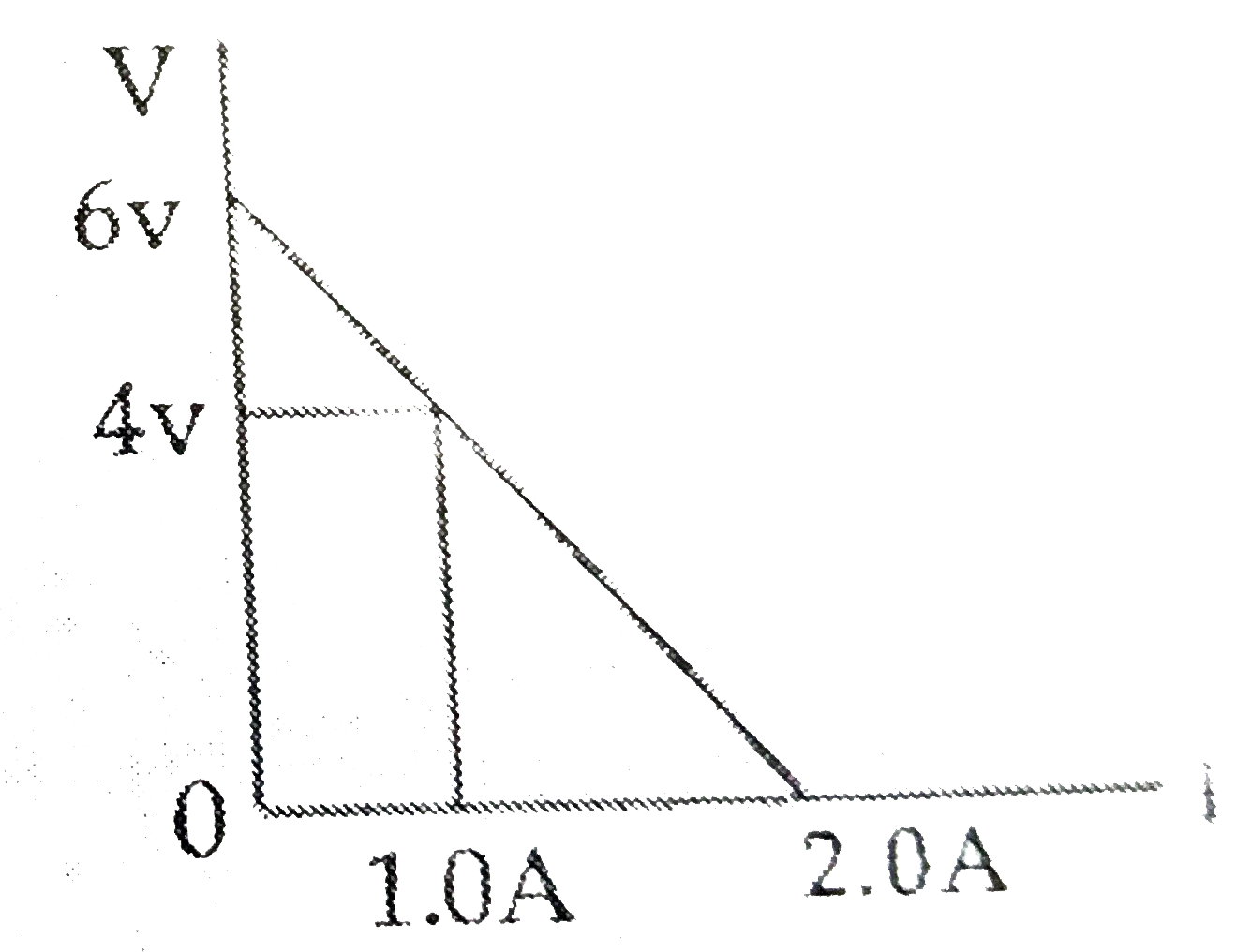Four identical cells each of emf 2V, are joined in parallel providing supply of current to external circuit consisting of two resistors joined in parallel. The terminal voltage of the cells ae read by an ideal voltmeter is 1.6V. Calculate the internal resistance of each cell.
To solve the problem step by step, let's break it down:
Step 1: Understanding the Circuit
We have four identical cells, each with an electromotive force (emf) of E=2V, connected in parallel. The external circuit consists of two 15Ω resistors connected in parallel.
Step 2: Calculate the Equivalent Resistance of the External Circuit
The two 15Ω resistors in parallel can be calculated using the formula for parallel resistors:
Req=R1⋅R2R1+R2=15⋅1515+15=22530=7.5Ω
Step 3: Determine the Terminal Voltage
The terminal voltage V of the cells is given as 1.6V.
Step 4: Apply the Formula Relating emf, Terminal Voltage, and Internal Resistance
The relationship between the emf (E), terminal voltage (V), internal resistance (r), and the load resistance (Req) can be expressed as:
V=E−I⋅r
Where I is the current flowing through the circuit. The current can also be expressed as:
I=VReq
Substituting V with 1.6V and Req with 7.5Ω:
I=1.67.5≈0.2133A
Step 5: Substitute Values into the Voltage Equation
Now, substitute I back into the voltage equation:
1.6=2−(0.2133)⋅r
Step 6: Solve for Internal Resistance r
Rearranging the equation gives:
(0.2133)⋅r=2−1.6
(0.2133)⋅r=0.4
r=0.40.2133≈1.875Ω
Step 7: Calculate the Internal Resistance of Each Cell
Since the four cells are in parallel, the equivalent internal resistance req of the cells can be expressed as:
req=r4
Thus, the internal resistance of each cell r is:
r=req⋅4=1.875⋅4=7.5Ω
Final Answer
The internal resistance of each cell is 7.5Ω.
---
We have four identical cells, each with an electromotive force (emf) of E=2V, connected in parallel. The external circuit consists of two 15Ω resistors connected in parallel.
The two 15Ω resistors in parallel can be calculated using the formula for parallel resistors:
The terminal voltage V of the cells is given as 1.6V.
The relationship between the emf (E), terminal voltage (V), internal resistance (r), and the load resistance (Req) can be expressed as:
Now, substitute I back into the voltage equation:
Rearranging the equation gives:
(0.2133)⋅r=0.4
r=0.40.2133≈1.875Ω
Since the four cells are in parallel, the equivalent internal resistance req of the cells can be expressed as:
The internal resistance of each cell is 7.5Ω.
Topper's Solved these Questions
- CURRENT ELECTRICITYBOOK - VMC MODULES ENGLISHCHAPTER - CURRENT ELECTRICITYEXERCISE - SOLVED EXAMPLES
24 Videos
- CURRENT ELECTRICITYBOOK - VMC MODULES ENGLISHCHAPTER - CURRENT ELECTRICITYEXERCISE - PRACTICE EXERCISE-1
5 Videos
- CAPACITORSBOOK - VMC MODULES ENGLISHCHAPTER - CAPACITORSEXERCISE - JEE Advance ( Archive ) LEVEL 48
1 Videos
- DC CIRCUITBOOK - VMC MODULES ENGLISHCHAPTER - DC CIRCUITEXERCISE - JEE ADVANCED ARCHIVE
68 Videos
Similar Questions
Two identical cells of emf 1.5 V each joined in paralllel provide supply to an external circuit consisting of two resistances of 7Ω each joined in parallel. A very high resistance voltmeter reads the terminal voltage of cells to be 1.4 V. Calculate the internal resistance of each cell.
View SolutionIf the reading of the ideal voltmeter shown in the circuit is 2V the internal resistance of the two identical cells is
_2019_CBT5_E01_030_Q01.png)
View SolutionA cell supplies a current of 1.2 A through two resistors each of 2 Ω connected in parallel. When the resistors are connected in series, it supplies a current of 0.4 A. Calculate :
the internal resistance,
View Solutionn identical cells, each of emf E and internal resistance r, are joined in series to form a closed circuit. Find the potential difference across any one cell.
View SolutionThree identical cells, each of emf 2 V and internal resistance 0.2Ω are connected in series to an external resistor of 7.4Ω. Calculate the current in the circuit.
View SolutionWhen 10 identical cells in sereis are connected to the ends of a resistance of 59Ω, the current is found to be 0.25A. But when the nsame cells, being connected in parallel, are joined to the ends of a resistance of 0.05Omega, the current is 25A. Calculate the internal resistance and the emf of each cell.

View SolutionN identical cells whether joined together in series or in parallel, give the same current, when connected to an external resistance of 'R'. The internal resistance of each cell is:-
View SolutionA group of six identical cells each of emf E and internal resistance r are joined in series to form a loop. The terminal voltage across each cells is
View SolutionThe reading on a high resistance voltmeter when a cell is connected across it is 3 V. When the terminals of the cell are also connected to a resistance of 4 Ω, then the voltmeter reading drops to 1.2 V. Find the internal resistance of the cell.
View SolutionThe figure shows a plot of terminal voltage 'V' verus the current 'I' of a given cell. Calculate from the graph (a) emf of the cell and (b) internal resistance of the cell.

View Solution
